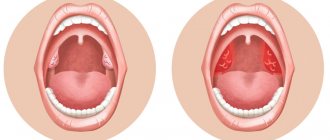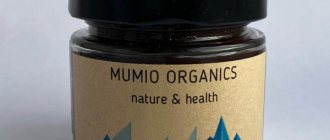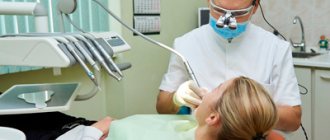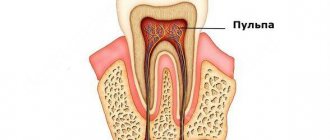Teething is a difficult period for babies and their parents. Every child experiences itching, pain and other unpleasant sensations at this time. And, of course, mom and dad don’t stand aside, trying to facilitate the appearance of the first teeth as much as possible by applying special gels for children’s gums, massage and other activities.
Let's figure out how to determine that your baby has started teething. Let's find out how to reduce discomfort.
Signs of teething
Most often, the first teeth appear at the sixth to eighth month, but in some babies the incisor may emerge as early as four months or, conversely, teething will be delayed for six months. All this is quite normal for a healthy little organism.
Since the tooth literally needs to cut through soft tissue to appear, the first symptoms will be redness and slight swelling of the gums in this place. In addition, the following symptoms may indicate the rapid eruption of the first teeth:
- Increased amount of saliva.
Over the course of a few weeks, you may notice that drool is dripping and even leaking from your mouth - this is normal during the teething period. - Itchy gums.
The tooth that is preparing to appear irritates the gums, causing itching and unpleasant pain. The child, trying to reduce discomfort, more often puts toys and pacifiers, various other objects and his hands into his mouth. - Appetite and sleep disturbances.
Unrelenting itching prevents the child from falling asleep and prevents him from eating properly. - Heat.
Some children experience an increase in temperature during this period; be careful; if the fever does not subside for more than two days, consult a doctor. - Stool disorder.
Diarrhea often accompanies the appearance of the first teeth, but you should also be very careful with it. If it intensifies, is too intense, or lasts more than two days, or is accompanied by a change in the color and smell of the stool, be sure to tell your doctor. - Symptoms of ARVI.
Since a cutting tooth causes inflammation in the oral cavity, it is quite logical for a runny nose and cough to appear. The main thing is not to confuse these symptoms with a real disease.
Experts choose
The problem of choosing a drug for rapid healing and pain relief from damage to the oral mucosa is very relevant, both for adults and young patients, doctors and pharmacists. But why?
Many of these products require repeated use because they are quickly washed off with saliva, which is not very convenient to use. Meanwhile, in order to ensure regeneration, the drug must remain in the oral cavity for a long time without losing its effectiveness. What is the choice of specialists?
At first glance, it may seem that it is mainly children who suffer from stomatitis: learning the world by heart, they put foreign objects into their mouths, which, as a rule, are not very clean and can damage the oral mucosa. However, the microflora of the child’s oral cavity resists infection much more strongly. Therefore, stomatitis is a problem faced not only by children, but also by adults.
Common causes of stomatitis include lack of vitamins, decreased immunity, diseases of the digestive, cardiovascular and endocrine systems. Stomatitis can appear due to connective tissue diseases, viral infections, or be of an allergic nature. Local causes of stomatitis are often associated with some traumatic factor. For example, during the period of getting used to orthopedic prostheses, bedsores may appear. Or correcting a bite using a brace system often results in injury to the inner surface of the lips. Damage to the oral mucosa is possible after surgical interventions, implantation, professional hygienic cleanings, consumption of hot foods and drinks, etc.
Dentists also “cry”
Among professionals, stomatitis is considered one of the most difficult pathologies. First, saliva makes it difficult to maintain dryness. Secondly, it is impossible to isolate the oral cavity from various irritants by prohibiting the patient from eating. An effective regenerating agent must remain on the mucous membrane for a sufficient time, relieve pain and accelerate the healing process. Therefore, professionals prefer Solcoseryl® dental adhesive paste.
Solcoseryl® dental adhesive paste is designed specifically for rapid healing and pain relief of mucosal injuries. It took into account all the anatomical and physiological features of the oral mucosa. Solcoseryl® improves microcirculation, reduces swelling, shortens healing time and restores the mucous membrane. In addition, the dental adhesive paste contains the anesthetic polidocanol, which begins to act within 1-5 minutes after application and relieves pain within 3-5 hours. This is very important, given that any, even the most minor, damage to the oral mucosa is very painful.
Resilience is the key to recovery
Solcoseryl® dental adhesive paste is resistant to being washed off by saliva and forms a protective film that can remain on the surface of the wound for 2-5 hours. All this time, the paste protects the mucous membrane from irritants, and its active ingredients absorb discharge from the wound and promote a rapid healing process.
Does not contain antiseptics, hormones and sugar, which minimizes the risk of unwanted reactions and allows the paste to be used by patients with concomitant diseases.
At the reception and at home
Adhesive paste is used not only in the dentist's office - it can also be used at home. The paste is available in 5 g tubes - this is usually enough for the full course of treatment. A 0.5 cm strip of paste is applied to the previously dried area of the mucous membrane and slightly moistened with water.
What are the advantages of Solcoseryl® paste compared to other oral products?
SDAP is a universal dental paste that can be used in all cases associated with violations of the integrity of the oral mucosa. This is its main advantage. In addition, Solcoseryl® paste does not contain the antiseptic chlorhexidine, which makes it possible to use it for a long time, has a quick and long-lasting local analgesic effect, adsorbs discharge from the wound well, creates conditions for the fastest tissue regeneration, and has a cytoprotective and membrane-stabilizing effect.
What exactly is your recommendation for Solcoseryl® dental adhesive paste based on?
I recommend drugs based on data on their effectiveness, safety, and also take into account customer reviews. Dental adhesive paste Solcoseryl can be recommended for many indications - it is convenient. Solcoseryl®, unlike other oral products, adheres well to the mucous membrane and allows food intake, which patients really like. I keep some statistics on reviews, and everyone who used the adhesive paste was satisfied.
To which groups of patients and in what cases can Solcoseryl® dental adhesive paste be used?
To protect mucosal damage, relieve pain, and promote rapid healing, Solcoseryl® can be used by almost all age groups of patients. For diseases such as gingivitis, periodontitis, conditions after surgical interventions, installation of implants, removal of dental plaque, trauma to the mucous membrane during the period of adaptation to orthopedic and orthodontic structures. In addition, dental adhesive paste is also effective for damage to the mucous membrane caused by general diseases of the body. The paste can be used by children with stomatitis, as well as by pregnant women and nursing mothers - the drug is quite safe.
So, the choice of specialists is obvious - for professionals, Solcoseryl® dental adhesive paste is the means of choice in the treatment of inflammatory diseases and damage to the oral mucosa.
Source: Pharmacy Council Magazine
How to make teething easier
While the teeth are just getting ready to appear, the baby experiences a lot of unpleasant sensations, which, of course, causes a lot of trouble for the parents. During this period, the child needs care and affection, as well as plenty of fluids. It is recommended that infants be breastfed more often, and children on artificial nutrition should be offered more warm water.
There are many ways to relieve discomfort. Two most popular:
- Give your child special teethers - these are soft silicone toys filled with liquid. Cool the toy slightly in the refrigerator before use. This will help relieve swelling and reduce pain. The textured surface of the teether will give the baby the opportunity to thoroughly massage and “scratch” the gums. The bright design of the toy will attract attention to it and amuse the child.
- Use topical medications - pain-relieving gels and ointments for gums, designed specifically for children. These remedies act very quickly and help the child forget about discomfort for several hours.
The effectiveness of baby gels for gums, how to use them when teething
Before buying this or that gel, consult your doctor to be sure of the safety and effectiveness of the product. Be sure to read the instructions before first use.
Basic rules for using gum gel when teething in a child:
- Apply the gel using a sterile cotton swab or very carefully with clean fingers.
- The product must be rubbed in slowly in a circular motion.
- Remember that a very small amount of gel is enough. Do not overdo it.
- The product can be used no more than four to five times a day, with a minimum interval of four hours between applications.
- Gels should only be used in cases of severe pain or discomfort. Usually the most painful teeth are the first two incisors and those that appear in the second year of life.
Gum massage during teething
Since drug treatment cannot be considered completely safe, you should try more moderate options first. We have already talked about one of them above - these are teethers. In addition to these, other measures can be taken. For example, switch to chilled food and drink. This will help reduce the discomfort a little.
Gentle gum massage will also be an effective solution. Be very careful, since your baby's gums are very delicate, if you overdo it, there is a risk of increasing the pain. Therefore, you should approach massage wisely and with balance. And most importantly, with full knowledge of the methodology.
The massage consists of three main stages:
- Preparation.
If you decide that you will massage your gums with your finger, you need to trim your nails well, rinse thoroughly, and disinfect. It is very important to get rid of any dirt on your hand. But since this is quite difficult, there is a simpler and more convenient option - use special finger pads or napkins. They can not only massage your gums, but also gently clean your first teeth of food debris. Wet wipes "ASEPTA BABY" from 0 to 3 years help reduce pain during teething, effectively cleanse the oral cavity of food debris, and reduce the risk of inflammation. Each napkin is individually packaged; when using, you do not need to rinse your mouth with water. So you can have a massage not only at home, if necessary. Place the napkin on your finger, now you can proceed directly to the massage itself. - Massage.
Both infants and older children need to move massage movements from the edges of the disturbing areas to the site of eruption. Lightly rub the gums, stroke or apply a little pressure. All these movements can be combined. Watch your baby's reaction and choose the option he likes best. You don’t have to worry that you won’t be able to reach all the places; the soft fibers of the finger napkin will help you massage hard-to-reach areas. Remember that the procedure should be carried out only where the roots of the teeth are. There is no need to massage the eruption site itself, as this can worsen the child’s condition, cause discomfort and make it difficult for the tooth to emerge. - Hygiene.
As early as six months, you can accustom your child to the need for daily oral care. At this time, it is already recommended to use a special children's brush instead of a finger napkin, as well as toothpastes intended for children. For example, ASEPTA BABY paste, made on the basis of plant extracts. This product does not contain resin or abrasive substances, so it is excellent for newly erupted baby teeth that are still fragile. The paste has a pleasant taste, which will make the cleaning process more enjoyable. At first, watch the cleaning, and when the child grows up, he can do everything on his own.
Teething massage is an effective procedure that can not only reduce discomfort, but also reduce the use of medications. But it is very important to be extremely careful when performing a massage, both for infants and older children. Babies' gums are much more tender than those of adults. But if you do everything correctly, then after a fairly short time you will notice that the baby has become more comfortable, he has calmed down, and the teething itself is faster and easier.
Professional gels and toothpastes for caries
Restores damaged areas of enamel and reduces tooth sensitivity. Recommended for erosion of tooth enamel, exposed tooth neck, after removal of orthodontic structures, before the whitening procedure.
It contains fluorides, which promote mineralization of tooth enamel and help prevent caries.
Promotes tissue regeneration, accelerates wound healing. Has anti-inflammatory, antioxidant, immunostimulating effects.
Indicated for multiple caries, non-carious lesions (fluorosis, hypoplasia, wedge-shaped effect), pathological abrasion of teeth, pregnancy, orthodontic treatment.
The bioavailable calcium and phosphorus included in the composition revive the enamel. Useful minerals reduce sensitivity and strengthen teeth, and milk protein stops tooth decay. Used as a means of caries prevention. The mousse is applied twice a day after brushing your teeth.
You may also be interested in
CHILDHOOD
Finger wipes from 0 to 3 years ASEPTA BABY
For gentle oral hygiene of babies and massage of gums during the eruption of the first teeth
More about the product
CHILDHOOD
Children's gel toothpaste from 0 to 3 years ASEPTA BABY
Designed for gentle care of baby's gums and baby teeth
More about the product
Teething in children symptoms
Teething is most often preceded by changes in the baby's behavior.
Signs that may signal the beginning of the process and should alert mom and dad:
- copious secretion of saliva, leading to a cough, as well as rashes around the mouth and on the chin;
- swelling, discoloration of the gums, anxiety of the child when touching them;
- restless sleep;
- problems with appetite up to complete refusal of food;
- increased body temperature;
- irritation of the gums, which the baby tries to scratch, putting everything that is within reach into his mouth;
- obvious signs of nervousness.
In some cases, the process of teething is similar to the manifestations of infectious diseases: it is accompanied by nausea, changes in stool, runny nose, and vomiting. To avoid possible complications, it is better to show the child to a pediatrician.
Folk remedies
In addition to what has already been listed, you can turn to traditional methods. There are a huge number of them. We offer several popular options:
- Ice. Wrap an ice cube in a soft, clean cloth and gently rub it over your gums. Don't stay in one place. Make sure that the ice itself does not come into contact with the gum under any circumstances. Instead of ice, you can use a chilled terry cloth. Wet it, keep it in the refrigerator and let your baby chew it a little.
- Honey. Before using it, make sure your child is not allergic. To relieve pain, you need to gently rub a little honey into your gums. This will help the baby sleep.
- Soda solution. To relieve teething pain, prepare a solution: dilute one teaspoon of baking soda in a glass of warm water, and then lightly massage your gums with a cloth soaked in the solution.
- Chamomile. This plant has good anti-inflammatory properties and can be used in many ways: making tea or making compresses. For severe pain, it is recommended to use chamomile oil; it should be gently rubbed into the cheek near the place where the tooth erupts.
- Clove oil. This remedy helps relieve acute pain and reduce inflammation. To avoid burning your baby's tender gums, clove oil must be diluted in almond or sunflower oil.
- Tea made from lemon balm, lavender and chamomile. This soothing drink can be drunk with almost no restrictions by both mother and baby.
- Sage tea. The product helps not only relieve pain, but also improve gum health.
- Cold fruits and vegetables. Since ancient times, the process of teething has been facilitated with the help of chilled food. To relieve swelling, give your child cold pieces of carrot or apple.
Helping children with acute toothache
It's impossible to predict
Vacations outside the city, weekends and holidays can be ruined by toothache. For some reason, it always starts at the very moment when there is no way to see a doctor.
To prevent such a nuisance from turning fun weekends and days of horror, you need to regularly visit the pediatric dentist. An experienced doctor will conduct a thorough examination of the entire oral cavity and tell you about any existing problems. If necessary, he will prescribe treatment and preventive procedures. Although this will not give a one hundred percent guarantee that your teeth will not start to hurt in a month, there will be more chances to spend a relaxing vacation away from the dentist’s office. It is advisable to carry out such inspections before leaving for the sea, abroad, to a village or to a children's camp. Finding a dental clinic in such places is problematic. In addition, the dentist will always be able to give advice on what to do if a sharp toothache takes you by surprise.
What hurts the most?
For children, the most unpleasant pain is the pain that occurs during exacerbation of chronic diseases: pulpitis and periodontitis.
Pulpitis
This disease can be suspected by aching pain. As a rule, they begin at night or in the evening. All unpleasant sensations may completely disappear by the morning and reappear in the evening. Pulpitis can also manifest itself in the form of prolonged pain, which intensifies while chewing food. If you examine children's teeth yourself, it is very difficult to determine the disease. Sometimes it is not possible to find anything other than a small “hole”.
When the aching pain lasts for several hours, it begins to “spread” to the neighboring teeth. After a while, it is difficult even for an adult to tell which tooth hurts. And it is even more problematic for a child to point out the source of pain. This complicates the diagnosis of the disease, since it is difficult to determine where to look.
Suspected pulpitis - see a doctor immediately
Pulp is the soft tissue inside the tooth. They are rich in nerve endings and blood vessels. With pulpitis, this bundle begins to become inflamed. At first there may be no pain at all. But over time, the disease begins to manifest itself. If you do not consult a dentist, complications may arise. Inflammation (periodontitis, abscess) gradually spreads to healthy tissues that are located around the diseased tooth. It is very painful and dangerous. Therefore, you cannot do without the help of a specialist.
The doctor will remove all affected areas of the tooth, apply a special medicine to the area of inflammation, and then restore the tooth to its original shape with filling material. If too much hard tissue is removed during treatment, a crown will be placed. All these procedures do not occur in one day. We must prepare for long-term treatment, which can last up to a month.
But! You can save a tooth only if you consult a doctor in time.
What to do before being examined by a doctor?
First of all, the child needs to relieve the pain. Any painkillers approved for children are suitable for this. When a child grows up in the house, as a rule, they are always in the first aid kit (Nurofen, Panadol, etc.). In such cases, it is not worth experimenting with drugs; it is best to give the baby a proven medicine that has helped him before. The doctor will do the rest. It is very important not to put off visiting the dentist, even if the pain completely disappears. An anesthetic cannot cure a diseased tooth, it only eliminates the symptoms of the disease.
Important! You cannot treat a bad tooth yourself, for example, pour crushed aspirin into the “hole”. This will only make the situation worse.
The disease does not go away on its own - there are no miracles
There are situations when a visit to the dentist is impossible for several days, and sometimes even a week. After such a long period, the pain may subside or go away completely. But this does not mean that the disease has passed. The period of exacerbation simply ended, and pulpitis became chronic. The pus could have passed away unnoticed through a hole in the gum, which parents often call a “pimple.” But the infection has not gone away from the body. The inflammation still continues, the child just doesn’t feel it. The infection can penetrate into the molar that is about to grow in this place, or spread throughout the body.
Exacerbation of pulpitis usually begins during a decrease in immunity. The pain occurs simultaneously with a cold or hypothermia.
At this moment, the number of unpleasant symptoms increases:
- The tooth hurts constantly. The pain intensifies while eating.
- The gums around the tooth become red and swollen.
- A fistula tract is formed. The body tries to remove pus through it.
- The tooth begins to loosen.
- The temperature rises, and the face on the side of the diseased tooth may swell.
When the situation has progressed to such signs, there is practically no chance of saving the tooth. And removing a tooth with severe inflammation is very painful. The anesthesia is not always fully effective and the entire process is very sensitive.
How to help your child at home
First of all, it is pain relief. You can give any medicine in the dose allowed for the child’s age. Nurofen, Panadol and other drugs are suitable. To relieve swelling at the site of inflammation, you can make a mouth bath. To do this, add a teaspoon of baking soda and salt to a glass of warm water. The solution should be taken into the mouth and held for one minute. You can do this bath up to five times during the day.
Carefully! Wrapping the area of inflammation in warm clothes is strictly prohibited. As the temperature rises, the rate of the inflammatory process increases. Because of this, the infection begins to spread to healthy tissue even faster. And the lesion becomes larger every minute.
Remember, first aid for toothache does not apply to medical procedures! It only eliminates the pain and makes the situation easier. The cause of pain can only be detected and treated by a specialist. Therefore, it is imperative to show your child to the dentist. He will make a diagnosis and carry out complete treatment.










